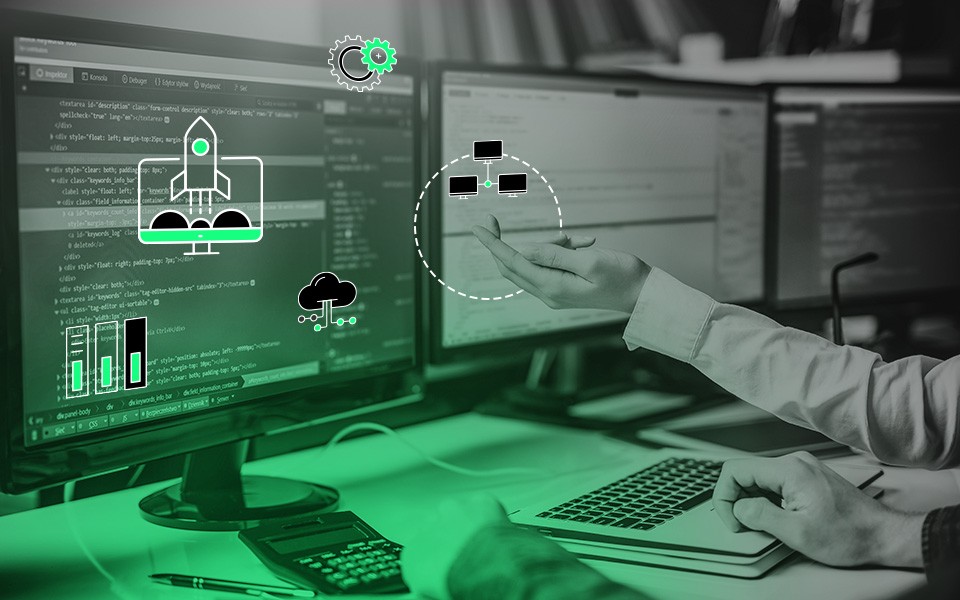 Back to blog
Back to blog
Enhancing your product with a digital layer

Digital technologies are changing industries, the market, how businesses operate, and how customers behave. In a world where people increasingly use the app for almost everything and convenience is pivotal, users’ relationships with products are defined by the tools that accompany them. As a result, companies increasingly ask how to digitize their activities or provide a unique online experience that would enrich their existing, more traditional offer. For those who manufacture analog products, it means changing the business mindset and adding a digital layer to the inherently physical experience.
Is it always worth doing? How to go about strategic change and digital product development? We invite you to read this article to learn more about enhancing your product with a digital layer.
I. Product experience and product digitization explained
It is a common misconception that a business should focus either on the customer or the product. This is not the case as long as ‘experience’ becomes a common denominator. Customer experience and product experience have become equally important in the digital age, and while the terms’ definitions overlap, there are significant differences between them.
Customer vs. product experience
The customer experience is made of two components. One concerns interactions with a specific business or brand’s touchpoints: products, services, operations, support, website or application navigation, social media, etc.
The client will develop feelings about the brand and perceptions of your offer based on these interactions. These emotions and attitudes towards the business make the second component of the customer experience equally, if not more, important. Everything your brand does or says influences the client’s perceptions, so your actions hugely impact the product’s success. Why?
- Positive experience increases customer loyalty
- It increases profit: 61% of customers are willing to pay more if they get a good experience.
- It improves your brand’s image: 49% of clients reported leaving the brand due to poor experience.
Customer experience encompasses its integral part – a product experience (PX). While the former focuses on all interactions with the company before, during, and after using the product, the latter concerns the product itself. PX is composed of interactions with a product, the user’s perception of its design, functionality, features, and quality, and the fulfillment of promises made by the producer. PX concerns the journey within the product itself – from download to onboarding to usage completion.
EXAMPLE
Apple provided an excellent example of advertising centered around the product experience when introducing the iPhone 13 Pro. The visual ad presents the product, its capabilities, and its usage while putting particular weight on the fact that a phone is only a mere tool whose real purpose is to create stories and movies and capture unforgettable experiences. When watching the ad, one starts to focus on what they can do and record with the phone rather than on the product itself.
The feelings arise, and the emotional connection with a brand is made.
Youtube: Introducing iPhone 13 Pro | Apple
The most important question: Why is the user’s personal experience crucial for product innovation?
We’re witnessing a near-complete market saturation (or oversaturation in specific sectors). The product or price is not a distinguishing factor anymore, with many companies offering the same. To stand out, a brand must provide a unique experience in addition to its ‘replicable’ product.
Hence, businesses must reconsider their interactions with clients – from the point of view of sales, marketing, and customer service strategy.
EXAMPLE
August Home creates automation solutions for household security, namely door locks, and doorbell cameras. They created the first smart lock in 2013, but it was in 2020 that they brought their game to a new level. That’s when the company introduced the August Wi-Fi Smart Lock – the feature-packed lock accompanied by built-in Wi-Fi. While there had already been smart locks on the market, they usually relied on Bluetooth connection as the network’s bridge. With the option of built-in Wi-Fi, users can reach the device from anywhere using the dedicated app and even grant access to other people sending them virtual keys via email.
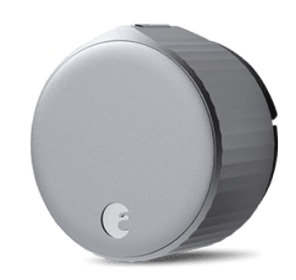
Automatic locking and unlocking the door are two primary features of the device. Still, customers can also benefit from multiple third-party integrations, like Google Home, HomeKit, or Alexa (for unlocking the door using voice command). The Amazon Alexa feature also lets the user know when the device battery is low and even automatically reorders it. Stylish design, easy installation, and security measures that monitor who enters the home and when, add up to the overall praised experience of the August Home’s new generation of locks.
The benefits of blending physical with digital
- It can give your business a competitive advantage. Rapid technology changes and product copying happen so quickly that companies must constantly adapt. A good practice is, however, not to throw all your money into risky new businesses. Instead, focus on the advantages of your core offer and enhance it with changing digital add-ons when the need and opportunity arise.
- It strengthens the core business and creates new streams of revenue when you approach a digital-first clientele.
- You develop unique capabilities that the competition cannot copy and satisfy consumer needs for the beneficial physical-digital experience.
- It helps you build a team of digitally-savvy specialists under a digitally oriented leadership, which will positively influence future market operations.
EXAMPLE
Moleskine’s smart solutions
Moleskine, a company focused on building an offline-facing product – a notebook – made some smart decisions when facing redundancy caused by digitization. They came up with several solutions, the first being the Smart Writing Set, which allows users to smoothly transcribe handwriting to font and export it to Google Drive, Evernote, iCloud, or PDF.
The functionality has been introduced thanks to the Pen+ writing tool that uses ink and a sensor connecting it to digital devices. On top of that, the instrument can record speaking and attach a voice note to the written page. This application perfectly combines a familiar experience with a digital resource, thus introducing a new physical-digital intersection.
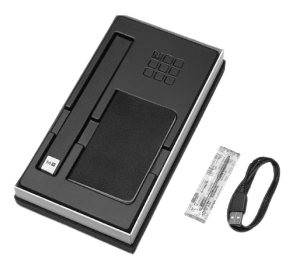
Another invention, Moleskine’s Timepage, is a cross-platform app with a customizable calendar, color adjustment, and alarm setting options. In addition, it includes a scheduling feature, some less obvious gems, like weather reports and location advice for your planned meetings, and a countdown widget.
The application has been praised for its elegance (also associated with the brand itself), keeping the natural flow of the day planner, commitment to updates, and customizability. With an application such as Timepage, Moleskine jumped on the digitization bandwagon and created a polished and functional solution while staying true to its original mission and brand feel.
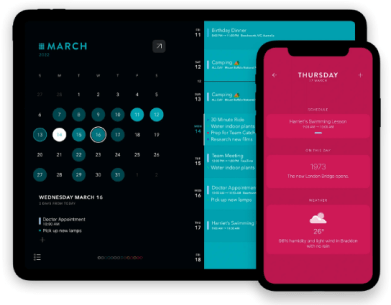
Digitally augmented products
An augmented product is one with features or services added to distinguish it from similar offers created by competitors. It’s made of three components
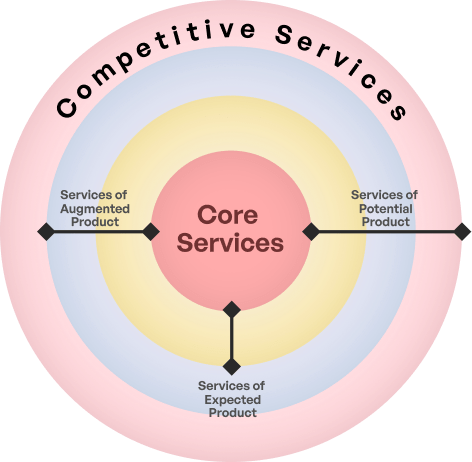
- The core product is a benefit the buyer gains with the purchase. For example – sportswear makes you feel better and look cooler.
- The actual product is the object that you sell, like sneakers.
- The augmented product adds something new to make the offer stand out and increase its perceived value – the reason the customer decides to buy it. If we stick to sportswear, the augmentation element could be a funky application that lets you choose, mix, and match your designs. In the case of physical products, where the augmentation is made by adding the digital layer, we’re talking about product digitization.
EXAMPLE

Vans, the American manufacturer of skateboarding shoes and sportswear, gives a great example of how fun the experience of buying their products can be if only you can use technology to let people design their clothes.
You can create everything, from t-shirts, to hoodies, to sneakers and backpacks, choosing the style, coloring, and even the central theme (zodiac sign? Stranger Things? You name it!). You can even add your patterns and images.
EXAMPLE

And we have our own example of a similar solution developed by Develtio. We built a highly customizable, readable, and user-friendly product configurator for HSR Meble, a company that offers ergonomic furniture for offices and homes. Every product available on the website can be designed and amended according to the customer’s preferences. Color, upholstery type, frame size, and extra features can be selected with the help of a product configurator developed by our company from scratch.
Creating an augmented online product is about adapting the physical product development process to the digital one. Adaptation starts with changing the business’ mindset, model, and strategy. You don’t need to go through such a strategic business change alone. Develtio will be with you every step, assisting you in analyzing customer journeys and building a comprehensive product experience development strategy.
II. Strategic change – business and mindset transformation
A company facing digital transformation must adapt its business model to the new digital reality. What’s important is that this process is driven by the customer and his consistent experience, as explained in the previous chapter.
The change happens when the company decides to integrate technology into all areas of its business – products, services, strategies – and focuses on specific goals: improving customer experience (CX), content accessibility, internal cooperation, or position on the market.
Adaptation to digital reality requires the transformation of the business model and processes and the company infrastructure (the way the data is stored and shared). Moreover, internal culture must be adapted, staff educated and the focus must shift towards digital. All these amendments are based on the choice of the new domain and digital experience that will become the center of the company’s activities.
EXAMPLE
Nike – a digital change visionary
Nike is a default example of a company that continuously improves its digital offer and adapts business processes to the changing environment. A few years ago, Nike realized that it had started to become yet another sportswear company, no different than dozens of others. Wanting to regain the leading position in the market, the company set three specific goals for its development:
- To double the innovation.
- To double the time to market.
- To double the direct connection touchpoints with the customer.
The ‘Consumer Direct Acceleration’ strategy based on customer data analytics, paired with technological innovations, allowed Nike to grow and thrive through the pandemic. In Q3 2021, 26% of Nike’s revenue came from digital channels.
It is a company notorious for excelling in digital adaptation. In 2006, they presented an activity tracker, Nike Plus (referred to as Nike+), that recorded the distance and pace of a walk or a run through a wireless connection. The tool initially required a sensor and a particular device to work. Since 2010, the software has been connected to a dedicated app that uses the accelerometer and GPS of the iPhone (and Android from 2012).
Nike has several other applications: the Nike App, Nike SNKRS, Nike Training Club (NTC), and Nike Running Club (NRC). The basic Nike App allows customers to access the online catalog and personalized offers and promotions. The incentives for users (who automatically become members of the Nike community) are numerous since the company partnered with AppleMusic, ClassPass, Treatwell, and Mindspace, which provide third-party rewards. The in-store integration is especially interesting – a game changer for the shopping experience. Thanks to the application, customers can interact with physical products, access their information, scan barcodes, request a try-on, and check out the availability of their favorite shoe style and size.

In 2021, the company introduced its own Metaverse – Nikeland, hosted by Roblox. In just a few months, the metaverse was visited by over 7 million people who created avatars, designed sportswear, and played games in the 3D environment.
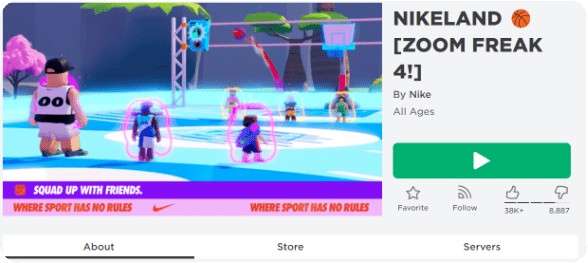
The digital adaptation doesn’t end there. The same year, Nike became an investor in NFT after acquiring a digital sneaker company, RTFKT. Nike supported their expansion to the NFT space, which resulted in the launch of the CryptoKicks Dunk Genesis, a collection of 20,000 non-fungible token shoes that can be purchased and worn by the user’s avatar in the metaverse.
Internal operations were also adapted to the new reality – Nike digitized footwear materials, expanded the use of robots, AI, and machine learning, and improved inventory platforms and demand-sensing technology, which allows them to significantly minimize order time and speed up the time to market.
In the future, they plan to revamp existing apps, invest in digital platforms, and build a technology center focused on accelerating the digital-first supply chain strategy and reimagining the customer experience.
Preparing your company for product digitization
Here are the steps to optimize your company’s processes, transform products, and create a digital working environment.
- Determine what digital change means for your business.
Determine what digital change means for your business. Do you want to change your organization’s operations, develop new products, or enrich existing physical products with additional digital layers? - Define your existing strategy and assess your capabilities.
Think of where you are today, and evaluate every aspect of your business, from social media to the website to management processes. Identify gaps in leadership, technology, operations, data management, customer experience, and the company culture.- Technology assessment. Ask yourself if you need any updates to the technology you’re already using, whether you have ideas for improvement, and which solutions your company could use in the future. Then, ask a crucial question: – do you have the right people to upgrade or introduce new technology?
- Data management assessment. Check what data is being analyzed and which solutions are used for such analysis. Identify the information gaps to be filled.
- Customer experience assessment. Before you move on with the process, see how you communicate with the customer, how many channels you are present on, and whether you have information concerning the level to which the company fulfills the customer’s needs.
- Operations assessment. Is there anything you can do to improve your company’s operations? Have you automated processes, if needed?
- Create the strategy.
Build on your strengths – existing customers, products, and an established brand image – and introduce new policies. Define goals and consider how different processes will be conducted in the company. - Make sure you have the right skills in place.
Switching to product digitization depends on technological advances, often by cutting-edge solutions, so it’s no wonder your staff may lack appropriate skills. Assess the preparedness of your team for the change. If needed, invest in new resources and training or partner up with a company that will help you through the transition. Create a technology roadmap and identify which solutions you need to implement to your processes and products. - Reimagine customer journey.
Customer experience is your number one priority for digital transformation. Your ultimate goal is to introduce new products and services to improve the experience and add more touchpoints. The journey to using a digitally enhanced product will differ from the one associated with a physical experience. Reimagine the steps, channels, and communication options. - Personalize the customer experience.
75% of customers will buy from a company that saves their name and purchase history and recommends products based on past actions. - Go omnichannel.
Today, customers interact with a brand on many channels simultaneously, and everything happens in real time. It makes it easier for clients to receive the support or service immediately and for you to create a comprehensive digital customer profile based on digital touchpoints’ analytics.
EXAMPLE
Ford as an example of a successfully executed company and product digitization
Ford is one of the prime examples of a company that introduced digital transformation initiatives on many levels. For starters, they improved the manufacturing process in factories by presenting the Material Flow Wireless Parts replenishment system to track the quantity and availability of different elements. The inventory process was made easier with a newly installed wireless infrastructure that allowed for quick notification exchange along the production lines.
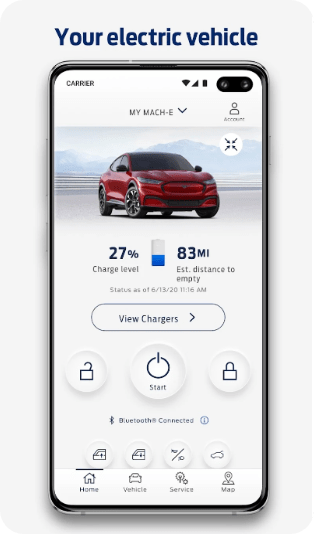
Moreover, they created a FordPass app in 2016, allowing Ford owners to control their vehicles remotely (lock, unlock, and check the battery or fuel levels).
The introduction of an app was a game-changer in terms of data analysis. The in-app customer behaviors were thoroughly evaluated, and the users were grouped based on actions taken. That allowed for the personalization of in-app services by the defined groups.
The bottom line is that Ford used transformation to gather data about customers’ interactions with the product and, consequently, add value to the offer, thus boosting profits.
Luxury products are looking to expand audiences in the digital space.

In 2021, Glenfiddich, the most awarded Single Malt Scotch Whisky brand, partnered up with the non-fungible token (NFT) marketplace BlockBar to release a series of 15 liquor NFTs, each representing the 1973 Armagnac cask finish Single Malt Scotch Whisky. Glenfiddich was the first luxury spirit brand available on the marketplace and one of the few goods and commodities companies that jumped on the NFT bandwagon. Through this kind of innovation, the company aimed to show an innovative approach, transcend the physical market barriers, and digitize their offer to reach a new community of collectors and add a new business line.
The customer who purchased the NFT has become the owner of the real-world product, with the token representing the artistic impression of the product serving as proof of ownership. The NFT could be resold, transferred to another buyer, or the actual product redeemed at any point in time. The popularity of the NFT is based, among others, on the status symbol attributed to the ownership of the tokens themselves (social media and the ability to tell the world about owning NFTs play a significant role in the use of this digital solution).
The concept’s popularity surprised the owners, with the 15 bottles selling out within seconds. Unsurprisingly, Glenfiddich continued cooperation with BlockBar and released another limited NFT series – the Chinese Lunar New Year edition in 2022.
III. Digital product development
Product manager vs. product owner
Before going to the phases of development, let’s clarify two important roles in the process – the product manager and the product owner. The two titles are sometimes used interchangeably, but the people who hold them focus on different things. Not every business and product development team will employ a product manager and owner separately; quite frequently, their tasks are combined. However, it’s good to understand what these team members do if you come across a bigger team with the two roles separate.
Product manager – discovers user needs, creates a long-term strategy and roadmap, makes decisions about the features to be added, and aligns the team, partners, and stakeholders around a shared vision. His role is customer-facing; ultimately, he considers what products or product enhancements to build next. He focuses on the strategy, vision, and market trends and identifies new opportunities.
The product owner – focuses on maximizing the product value. Takes care of the backlog, organizes production processes, and ensures that the work is aligned with the roadmap. His role is mostly product team-facing. Notably, he is responsible for managing the technological stack and should be able to provide insights into solutions needed for developing new products or features. In addition, he translates the product manager’s vision into actionable tasks.
EXAMPLE
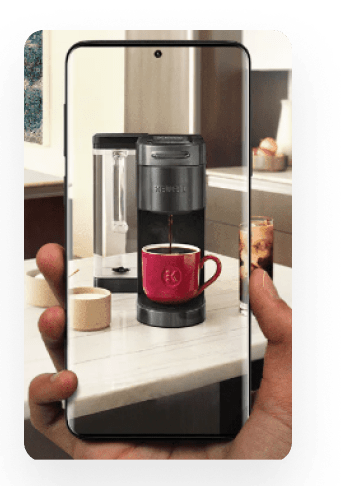
Released in 2021, Keurig K-Supreme Plus SMART coffee maker is often mentioned as the best device of this kind. Why? It can be controlled via the interface or the smartphone, voice-guided using Google Home or Amazon Alexa, and it underlines personalization unlike any of similar devices available on the market.
The user can customize and save up to 10 favorite brews and even give them names. In addition, he can choose various strength, temperature, and cup size settings. The My Brew Style feature tracks coffee-making habits and provides recommendations based on the gathered data. The app also allows customers to schedule a brew, automatically orders caps, and makes remote brewing possible thanks to the WI-Fi connectivity.
Digital product development process – steps explained.
As many as 49% of all companies don’t adhere to an established development process but make no mistake. This is not an example to follow, as at least half of them fail to deliver a product that would be tailored to customers’ needs. What you want to avoid is creating a product designed for no one that doesn’t fit your budget and doesn’t align with your business goals. We will shortly explain the main stages of the development process.
Product development stages
1. Discovery phase part I – exploration
Whether you’re looking to expand your business, build a new product, or add a new layer or feature to an existing one, you first need to understand what you create, why, and who the end user is. Thus, the discovery aims to establish product-market fit, identify user needs, and find the right solutions that respond to them. To put it differently – the discovery phase is about minimizing risks:
- Value risk – whether customers will be interested in the product
- Usability risk – whether they will know how to handle the product
- Feasibility risk – whether you have a team in place that can deliver the project
- Business risk – whether this is a good solution that will benefit your company in the long run
So, how do we assess and mitigate those risks? Before diving into the process, it’s worth asking several questions regarding the problem, solution, and business space.
The problem: What is the problem? Who are the users who face it? What are their demographics? How are they dealing with the problem now?
The solution: What is wrong with the current solution? What is the added value of your idea for the customer? Why would he use your product and not that of the competition?
The business: What value will the product add to your company? Does it align with the overall business goals? What budget is needed? Can you effectively monetize the new idea?
Aligning your team’s and stakeholders’ vision
First things first – you need a multidisciplinary team that will be accountable for successful product delivery. From the beginning, it is best to involve those responsible for project management, development, and user experience.
Kick-off meetings
If you seek help from an external company like Develtio, you will typically first participate in the kick-off meeting. We organize those to establish a vision of the issue to be solved, shared by our team and the client, and agree on how we can tackle the problem and the following steps to be taken. You can learn more about how we do kick-off meetings here.
As a result of the meeting, we will have a shared understanding of the desired end goal, the project’s background, its broader market and social context, and preliminary proposals for achieving the defined purpose.
Discovery / MVP workshops
Workshops are similar to kick-off meetings in that they aim to help define the scope of the product, its goals, and the proposed solution to the user’s problems. Ideally, you will have an initial idea of the MVP at the end of the workshop.
Typically, the software development team invites the client for a meeting that can take a few hours to several days. The early stage concerns the product vision and strategy, mapping user groups, and establishing the unique value offered to the customer. It’s a perfect time to discuss anticipated user stories and personas and analyze the competitive landscape. Thorough conversations allow us to dive into the product functionality, user journey mapping, design mood, and visual vibe of the product. Such a meeting is invaluable, and we highly recommend organizing one for your project.
Some of the tools you can use during the workshops and throughout the discovery phase are, for example, value proposition and lean canvas, which are useful frameworks to present your ideas in a tangible format.
Youtube: Value Proposition Canvas
Research
Whether you do the research yourself or turn to the software development company, the team will usually use various techniques to establish the actual user needs. From surveys to interviews and focus groups to the creation of empathy maps, service blueprints, and user journeys, the methods can be divided into four categories:
- Attitudinal research – used to understand the attitude, helpful in the usability testing of performed actions.
- Qualitative research – based on observations, looks for reasons why users take specific actions in the way they do.
- Quantitative research – based on accurate data analysis, tells us, for example, what percentage of users clicked on a given button.
- Behavioral research – Tools such as personas or interviews allow us to understand what people think of the proposed product.
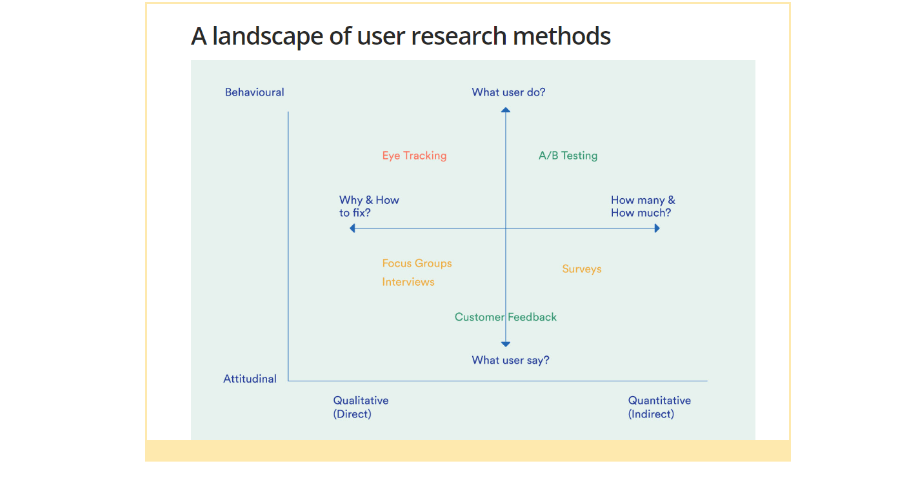
At this point, it’s equally crucial to conduct thorough competitor analysis and market research to assess your product’s competitive advantage.
EXAMPLE
Netflix is the poster child for product development based on customer-centered experimentation. It started as a physical product-oriented DVD mail rental platform. Ten years after its creation, the company decided to go full digital with its streaming service.
The idea was based purely on consumer science. A/B testing is often used by the company when it comes to product changes, from algorithm adjustments to UI and movie-associated images. The process is as straightforward as ever: the team starts with hypotheses regarding what could increase the viewers’ engagement, creates a prototype, and tests it with thousands of users divided into one control and one or more experimental groups to check various solutions. While different metrics are measured, streaming hours and retention remain the main focus of the testing.
In 2010, Netflix built a robust experimentation platform called Netflix XP, which was used for data collection, visualization, and statistical analysis. It was connected to the experimentation front-end used for A/B tests called ABlaze. The research capability was further enriched in 2017 with the open-source deep learning library – Vectorflow. By the end of that year, Netflix had 118 mln subscribers. A year later, the company introduced quasi-experiments focused on analyzing smaller customer cohorts based on the viewer’s location.
2. Strategy
You took the first steps in strategizing by figuring out the problem and ways to solve it and building the development team. Then, you can move on with the process with a clear idea for the product and think of the broader plan with specific KPIs and, eventually, the deployment plan. Consider the following aspects:
- Goal setting
- Workflow prioritization
- Value proposition
- Budget
- Pricing, promotion, sales, content, and positioning strategy of the product (in cooperation with marketing and sales teams)
Product strategy essentially concerns how you want to win the market with your product.
3. Discovery phase part II – Validation, Ideation, and prototyping
Ideation is the stage where you move from the problem to the solution, considering the input gathered from kick-off meetings, workshops, and research. At this point, you will brainstorm and use storyboards, customer journeys, or mind-mapping techniques to decide which characteristics and features can improve your product’s usefulness and ability to solve defined problems. Based on that, the team will ideate the product’s Information Architecture, which concerns organizing and structuring content effectively (mapping all the features and elements of the user flow).
Prototypes allow you to bring ideas to life before diving into the complicated development phase. You can read about Develtio’s approach to wireframing and prototypin here. The main goal is to create a simple, yet preferably interactive, version of the product with specific features, present its structure and functionality and gather feedback while involving all stakeholders in the evaluation process.
An example of a plan for a discovery phase for a new product
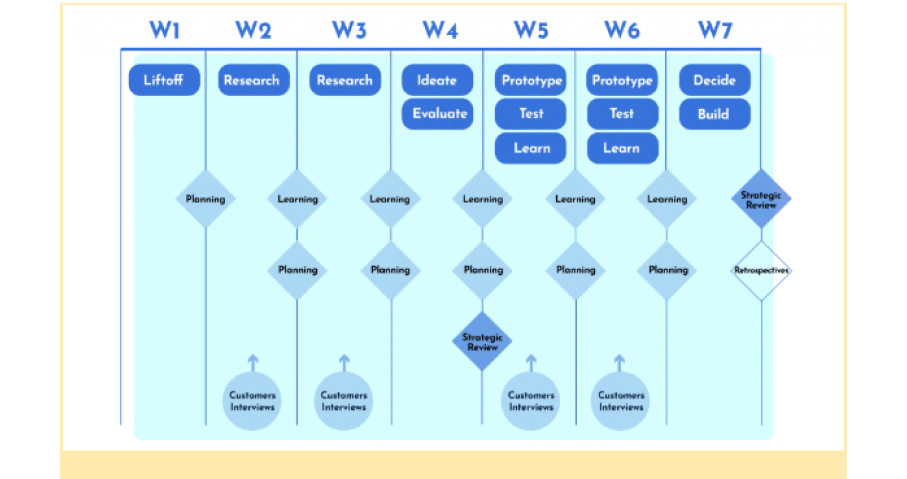
Source: https://adaptmethodology.com/product-discovery-process/
Idea validation, and testing
Design sprints
A design sprint is a process that has been gaining wide popularity, used as a technique to validate and prototype ideas. Over five days, the participants go through different stages:
- Day 1 – Understand. Mapping out the problem, the goal, and the user journeys.
- Day 2 – Ideate. Proposing various solutions.
- Day 3 – Decide on the most viable idea and sketch storyboards.
- Day 4 – Create a workable prototype.
- Day 5 – Test with real users. Five is enough since you don’t have more time anyway.
This method is quick and intensive and gives you a general idea of the success rate of your proposals.
Idea validation and usability testing – examples by Develtio
This is the stage where you verify whether your ideas work and if the product concept is worth further development and, thus, financial investment. It’s also the time to perform usability testing on the prototypes you’ve prepared. The Develtio team conducted two notable examples of usability testing for our clients – RIP.ie and Biletyna.pl.
RIP.ie usability test report
RIP.ie is an obituary website that publishes death notices. We conducted tests to evaluate the new design in the mobile version, including the navigation menu, added sections, and enhanced layout.
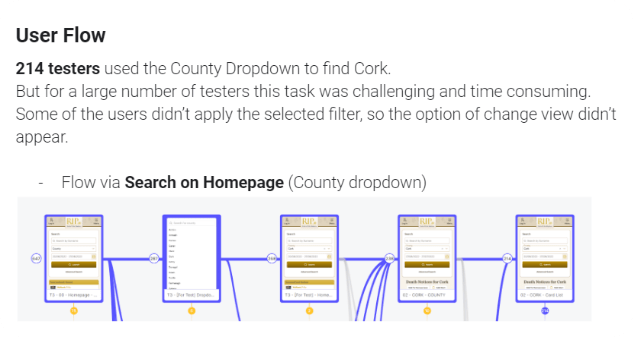
Biletyna usability test report
Biletyna.pl is a rapidly growing online event booking and ticketing service that sells tickets to 32,000 events annually. We were asked to develop a mobile application allowing attendees to search for events, manage bookings, buy and present tickets, and even share them with friends. For Biletyna, we prepared task-based tests to check the usability level of various proposed features concerning booking management, notifications, sharing tickets with friends, etc.

Depending on whether the client is planning to launch a new application or create a new product, we have to undertake different steps to prepare the tests. In the case of new products, we will create a design and carefully listen to the client’s initial comments. On the other hand, if we focus on the existing product’s enhancement, we will incorporate new ideas into a ready-made design.
In the case of existing products, we use tools such as Google Analytics to define users’ behavior flow and main touch points. We also create user personas with specific behavioral statistics to better understand the target audience (it’s an example of the above-mentioned behavioral research).
Next, tests are prepared and distributed among existing or potential users, after which we carefully analyze the output – statistics, user flows, interaction recordings, heat maps, and open-ended surveys. Finally, based on the gathered insights, we can either move on to the next stage, or you need to refine your initial ideas and perform tests of the amendments you introduced.
4. Development
Once we’re past the stage of high-quality prototype testing and the product skeleton and functionalities are agreed upon by the development team and the client, we can move on to the final, detailed design preparation following the insights gathered through testing.
And then, eventually, to the development phase of the project. Several conditions must be met to proceed with the development:
- Product-to-market fit is confirmed through user testing.
- Use cases were defined and tested, and the best solutions were chosen.
- Profit potential was determined, and monetization ideas were established.
- The best-suited technological solutions were agreed on.
- The strategy, including the roadmap and budget, has been set, verified, and the necessary resources have been secured.
The ‘developer hand-off’ is by no means synonymous with designers’ work ending right there and then. Designers and coders must work closely at this stage to ensure common understanding, the correct implementation of ideas, and the product’s technical feasibility. You can learn more about the design based on collaboration here.
EXAMPLE
Companion app and AI-powered system – L’Oreal/ Perso
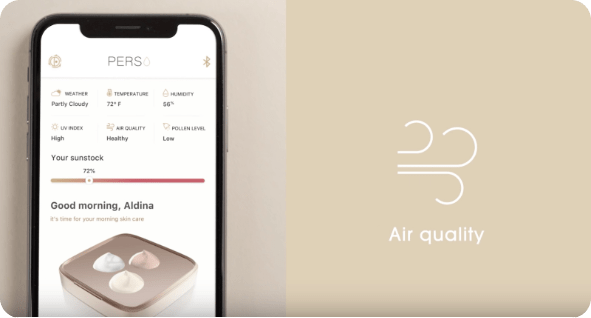
L’Oreal has been promoting AI and machine learning applications for cosmetics for a while now. For example, the company and Amazon created a solution allowing clients to test lipstick shades on pictures and videos of themselves. The collaboration with Facebook led to another innovation, where the platform’s users could try on makeup samples through the network’s application. In 2020 L’Oreal unveiled the idea for Perso – a smart dispenser to blend lipstick, foundation, and skincare formulas. The plan was reintroduced in 2021 with a change – the lipstick device was to be presented before the skincare device.
Nevertheless, the initial idea of joined devices was warmly welcomed. With Perso, customers were to use a companion app to take a picture of their skin with a phone. The MidiFace technology analyzed the pic and mapped wrinkles, spots, and pore visibility. Geolocation-based data provided information about air quality that could influence skin (humidity, temperature, pollen, etc.) in the client’s location. L’Oreal’s idea was that Perso’s device hardware would analyze all the gathered information, compress formulas from cartridges and push them upwards toward the dispensing tray placed on top of the device. The lipstick shades were to be matched thanks to the relevant feature.
Video: Introducing Perso, a 3-in-1 at-home personalized beauty device by L’Oréal
5. Launch, iteration, maintenance, and growth
One thing to remember is that the product development process is, in fact, a cycle. Of course, a product launch is a moment everyone has been waiting for. It’s not as simple as putting your product online, however. If done well, it should be accompanied by a pre-launch strategy consisting of a social media campaign, teasers, promotion campaigns, pre-release reviews, etc.
Once the product is out in the world, the job is not done. You will get more user feedback and observe changing customer demands, environments, and competition. Use all the insights to constantly develop and improve the user experience and ensure the evolution of security, quality, and pricing, to match developing market trends. Launching the product is easy; staying competitive and ensuring business continuity and growth is hard.
EXAMPLE
Continuous product development by Bosch
Bosch provides an example of how a regular product can be completely reimagined and reinvented with the digital layer. The company launched eBike Systems in 2010. Each year, they made the biking experience better, smoother, and more digitally supported in ways that were hard to imagine a mere few years ago.
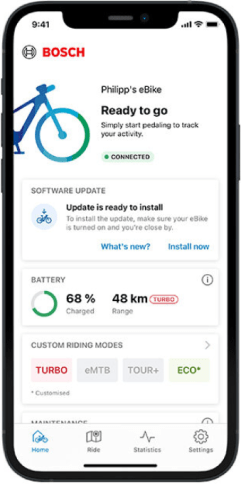
From a detachable on-board computer to GPS navigation, fitness training, ABS features, theft protection functionality, and smart connectivity options, the culmination came in 2022 when Bosch launched the Smart System connecting the eBike Flow app with the battery and the control and drive units. Bosch Smart System includes a 750WH battery, 4A charger, Kiox 300 solution to display the system, and the LED remote that connects the bike with the application (the biker using it can call up necessary data, for example, regarding the battery usage levels, and the relevant information is presented either on the Kiox display screen or the smartphone).
The highlight is, of course, the funky new app equipped with about as many bike-related features as you can imagine: alarm, lock, monitoring of speed, ride time, and distance, navigation and route planning supported by the display of 3D buildings, activity tracking options, and individual riding modes. In addition, for the first time, the app has been opened to third-party integrations (such as Apple Health) to allow for the highest level of experience personalization.
Video: “What if?” – The future of eBike mobility | Bosch eBike Systems
Bosch is a tech giant, but it’s noteworthy that they never stop developing their solutions. For the eBike system, they already have plans for the model 2023 and its improved features, including new modes of displaying data, new Hill Hold, and improved ABS features, as well as additional eBike motor models dedicated to cargo and city bikes.
EXAMPLE
Lego
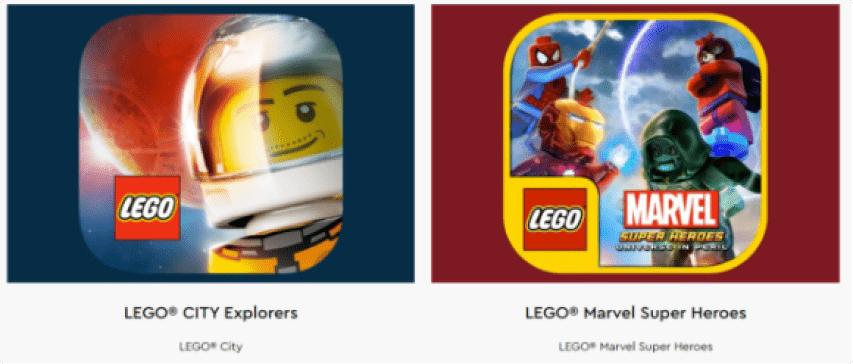
In 2004, the vision of bankruptcy loomed over LEGO due to poorly executed digital transformation. It turned out that the company unnecessarily drifted away from the core value proposition and had to focus instead on its primary offer. And so it did. One of the main ideas was to allow customers to create user-generated toys. After all, the best thing about Lego is that one changes into the constructor when using it. Thus came LEGO Ideas – a community-based platform where you can share creations, enter challenges, and propose ideas for LEGO sets and models.
LEGO is an example of a company built on solid engagement and attachment to the product among customers of all ages and its rich history. After all, it’s been the favorite play of boys and girls worldwide – the ones that are now adults and willing to still interact with the toy designed primarily for children.
Today, many apps and mobile and online games are available around specific stories and characters (Batman, Star Wars, and Marvel Superheroes, among others). The emotional attachment causes adults to invest in the extensive offer of such products. Interestingly, the app that isn’t the game allows the user to return to the roots – build, construct, collect pieces, and exchange them with friends.
7 common digital product development pitfalls to avoid
- Not paying attention to real user problems. Assumptions and wishful thinking are your worst enemies. You risk ruining the project entirely if you’re too eager to launch a solution without checking if it’s solving any actual problems.
- Assuming the product-market fit. So you have this brilliant idea for a digital product. But do you know if there is an actual place in the existing market for it and whether it will bring your company any profit? User testing, competition analysis, discovery and MVP workshops, or interest measurement are all methods that will help you establish market validation.
- Not involving developers from the start. Your whole team needs to understand the problem and the product. Developers will provide technical expertise and ensure that proposed solutions and features are adequate and possible to create and implement (which is not always the case).
- Skipping prototypes, early-on testing, and MVP. This is a grave mistake, yet one that can be quite often seen among various companies that tend to omit user experience and ignore the feedback from early adopters. Never assume that you know best and that constant opinion gathering is not essential to product development.
- Consequently – ignoring received feedback. This is your primary source of information on whether you’re choosing the right direction for product development. Arrogance and focus on a kick-ass offer that serves no one means completely missing the point and potentially losing a lot of money.
- Putting the features and technology first rather than focusing on the product. Always keep in mind that you develop solutions based on customer needs first. So your app or website should be accessible, easy to use, provide value to the customer and cover all the critical pain points. The dazzling abundance of features is not necessary; it overshadows functionality.
- Relying solely on the in-house development team. You may hire a great group of professionals in your company. But technology and development are the areas that are constantly changing – new methods, techniques, and solutions emerge almost daily. Software development companies exist to follow these trends and changes and to ensure that they employ persons with the right skills to deliver even the most complex projects. This is not to say that you should not get involved. By all means, do. In Develtio, we rely heavily on ongoing collaboration and client feedback.
EXAMPLE
A few years ago, Oral-B commissioned the product design studio Future Facility to upgrade its electric toothbrush. Initially, the company aimed to create a data-tracking device showing how well each tooth was brushed. But, to their surprise, the design studio proposed a completely different approach. They concluded that oral hygiene is a relatively stressful and neurotic task to adhere to, and usage tracking would only add to those feelings. So instead, they advised the company to be more empathetic and focus on customers’ pain points.
In this case, specifically, the problems with forgetting to charge the toothbrush and change the brush head regularly. As a result, the product was designed to be Bluetooth-connected. Not only could it be charged through the USB port, but it also sent reminders about replacing the brush head directly to the smartphone at regular intervals. The idea was that the app would direct customers to the e-commerce store.
Since then, Oral-B has created many models of smart toothbrushes and revisited the idea of health-tracking applications; however, the discussed model was a great example of customer-centric design thinking.
Oral-B partnered with another design company – IDEO – to tackle the design issue of children’s toothbrushes.

Initially, the children’s product was similar to the one dedicated to adults, except slimmer and shorter. However, through the observations conducted in customers’ homes, the team noticed that such a solution is not convenient for kids who tend to grab the toothbrush in their fists, very close to the brush head, which makes it hard to maneuver. It even caused children to hit themselves in the face.
Oral-B and IDEO designed a prototype of the ‘squish gripper’ with a soft texture at the grip and a wide handle. Then, the team observed the kids using the prototype in their homes.
The results were positive – with better navigation options and hygiene-handling results. The attractive imagery and design also raised customers’ interest in the product.
VI. Product experience upgrade – tips on how to effectively blend digital with physical
There are 4 trillion products released into the market every day from a huge range of industries, and the success of yours depends in equal amounts on the idea, opportunity, capacity, and vision. However, one thing is certain – to stand out, focus on upgrading the experience, not the product itself.
Designs by Develtio
EXAMPLE
Dakea is a company that delivers high-quality roof windows. We created a mobile app for the client, which allows professionals to scan the QR code and register newly placed windows. The app’s added value is allowing users to collect points in the Loyalty Program and later exchange them for valuable prizes. The app is also fully integrated with Dakea’s CRM solution – Salesforce. As a result, all customers’ and contractors’ business data get instantly updated in the CRM’s database.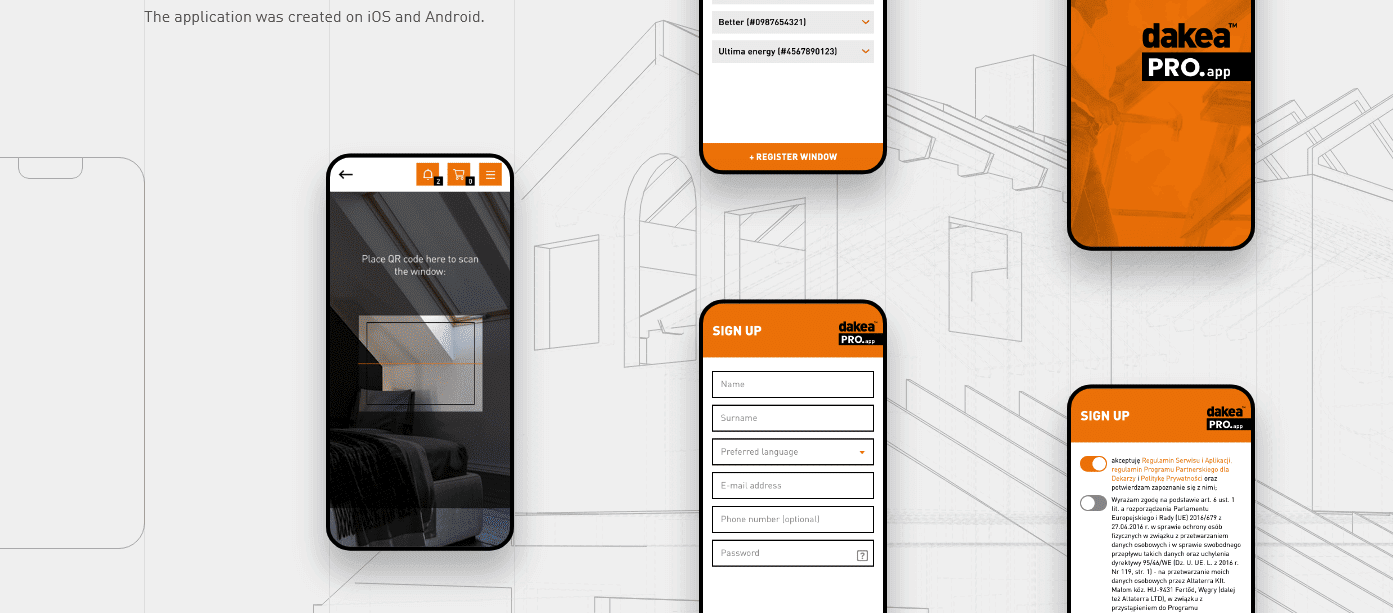
The online windows configurator on Dakea’s website makes it possible for customers and professionals to see what the chosen window would look like based on the introduced technical or functional parameters. This user-friendly tool can be used if a comprehensive product catalog is, for any reason, not enough.
EXAMPLE

TCM is an adhesive tape manufacturer based in Poland. We created a multifunctional tool that allows customers to personalize selected adhesive tape types.
Before, prospective clients looking for personalized or non-standard products would need to contact TCM’s customer support team to specify requirements and discuss the options. The introduction of the tape creator made the purchase experience much more engaging and fun for the consumers and more streamlined for the company.

The client can pick the color, font, tape’s length and width, the print’s size and direction, and even add his logo or other visual assets directly to the design. Finally, the prepared product can be added to the basket and ordered in a simple and smooth process that supports customer experience, reduces contact attempts with customer support, and integrates the website with the company’s manufacturing system.
The good news, with the right approach, tools, and customer-centric design in mind, you can beat the competition. A 2018 PwC survey showed that people value convenience, efficiency, and friendly and knowledgeable experience. Personalization and up-to-date technology were also high on the scale. Representatives of Gen Z paid more attention to the mobile experience, fun, and design than the general population.
It’s important that these factors, with availability and affordability, decide whether the customer will use a product’s physical or digital feature (and not the fact that it is or isn’t digital).
Here are some tips on how to effectively blend digital and physical attributes and enhance the existing product:
-
- Find a good use case to generate real value. Many products these days will have a mobile app attached to them to facilitate, for example, the usage or purchase of a specific product. But, you can think outside of the box and add a recipe app to kitchen appliances, a cookbook to the grill that you typically manufacture, or a virtual service allowing you to match the perfect haircut to the customer’s face if your area of expertise is producing and selling hair dye.Finding additional practical functionality is certainly not easy. Still, with the techniques such as discovery workshops, and market and user research, you have a chance to stand out in the market.
- Focus on analytics. What behavior leads to the use of specific features? Which features are used most frequently? What are the conversion and bounce rates? Gather product experience insights to find out what the users think, feel and how they interact with your product. Choose the tools that allow recording users’ interactions with the product.
- Analyze the customer journey to understand when and why your existing product is used, when customers leave it, and when they look for help or additional information. Knowing possible obstacles in the journey leads to the creation of better self-service.
EXAMPLE
Example of the mixed digital and non-digital user journey:
Let’s imagine you want to buy a vacuum cleaner, a physical one, accompanied by the app. The UX designer who maps the journey will first consider steps like finding, purchasing and ordering the product. He will then imagine the packaging and description, which are also very important. The unboxing experience can be made fun and unique with the right approach.
The vacuum cleaner is connected to the app that allows you to schedule cleaning programs, automate them and choose various settings. Therefore, the next step is registration, setting up, and linking the physical product with a digital counterpart. That means that all instructions must be clear, and the website that allows downloading the app must be understandable and concise. The application itself has to be attractive, easy to use, and mostly provide some added value. Finally, the ongoing usage of the cleaner will be analyzed and any pain points registered, along with the relevant metrics.
- Design matters, so make sure the digital element looks good and is visually consistent across all the channels (and aligns with the physical product’s look and feel). Users value the integrated omnichannel experience.
- Try creating digital-physical workflows which will illustrate every interaction with the digital layer of the product and every action the user will take with the physical element. It will help you integrate all the features and make communication easy for teams dealing with online and offline experiences.
- Stay truthful to the essence of the main object, and don’t overcomplicate things. Not everything needs to be controlled with the app, and not all products require a touchscreen. If the digital layer makes it more challenging to perform a task, don’t add it. Instead, focus on something that cannot be included in the offline design.
VI. Conclusion
Enhancing analog products with digital experiences is not always straightforward. A lot depends on your vision, market opportunity, and business capabilities. The digital change will be different for retailers and manufacturers. We provided examples of how different brands enrich their narrative and enhance existing analog products by investing in a unique experience designed for digitally-conscious customers. We also focused on the process of product development to ease your way into the digital market. Let us leave you with some main outtakes:
- Focus on improving the overall experience rather than the existing product.
- Customer and product experience should be the drivers of your business strategy.
- Invest in research and usability testing.
- In-house and customer feedback is a primary source of information necessary for successful product development.
- Be ready to change the initial vision of the product based on the feedback.
- Remember that online and offline customer journeys differ. Reimagine the journey for the newly introduced digital element of the product.
- Developing an app is easier than finding a good use case for the enhanced product. That’s why the discovery process is crucial.
- The business environment is ever-changing, so you need to constantly adapt your processes and products to the evolving digital reality.
- Customer experience is the compass that should guide your business’ digital evolution.
- Turn to professionals with the proper knowledge and skills to help you develop digital products.
Similar posts:
What can we do for you?
Talk to us about your project and let's start building it together!




